[![enter image description here][1]][1]I am trying to build a simple circuit to power a load with two different power supplies (5 V and 0.7 V). 
When one is active the other one is not and it's disconnected from the load. I know that this would be straightforward with a manual switch but I need this application to be automatic, maybe using a MOSFET as a switch controlled by a uC but it's not clear to me how I can achieve that. I wouldn't use a relay since I have constraints on cost and size of the footprint. Thanks. Claudio